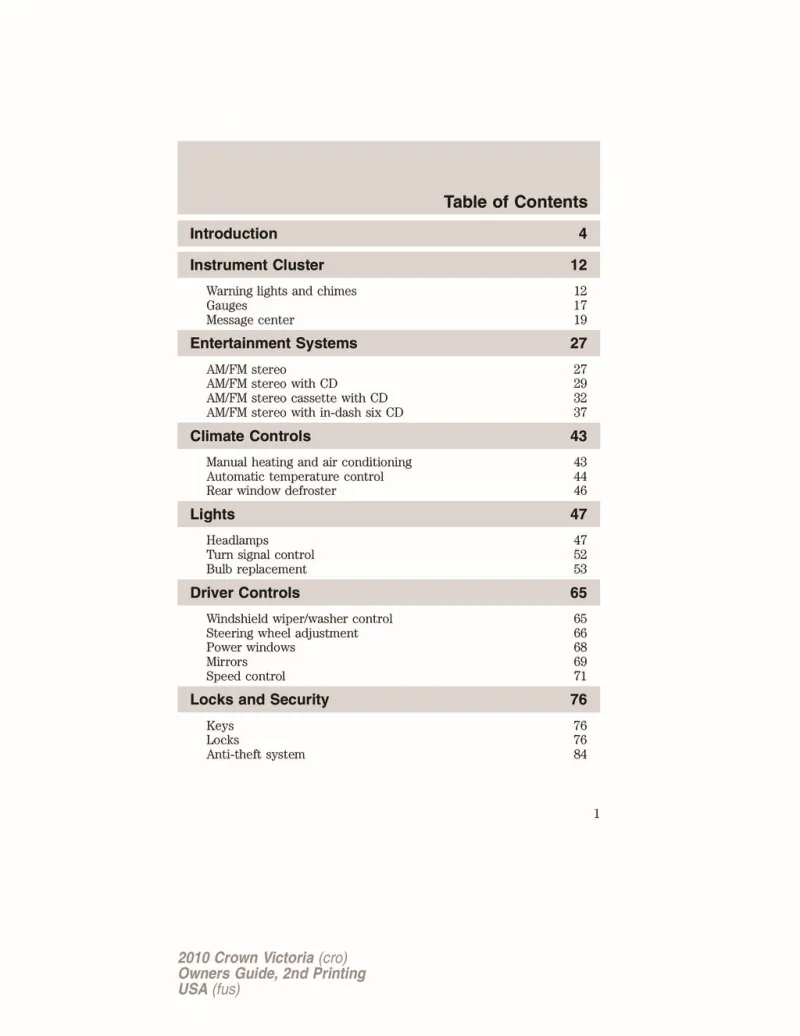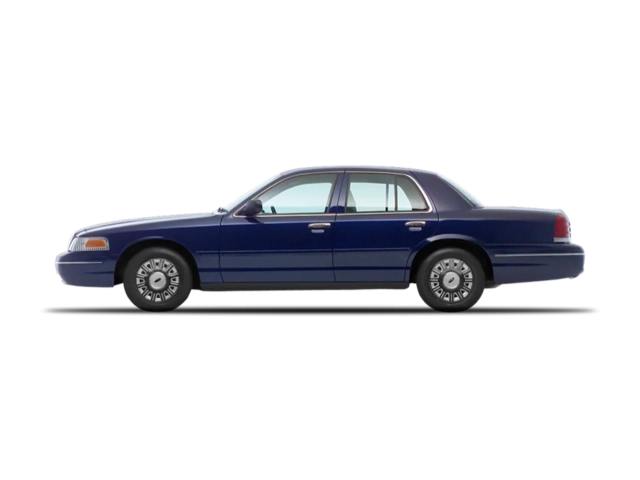2010 Ford Crown Victoria Owner's Manual

Table of Contents
2010 Ford Crown Victoria Overview
Introduction
The 2010 Ford Crown Victoria stands as a stalwart in the world of full-size sedans, balancing classic American styling with robust performance. Known for its durability and spaciousness, the Crown Victoria has long been a favorite among law enforcement agencies and fleet services, thanks to its reliable nature and easy maintenance. This model year boasts a refined look while maintaining its historic identity, providing drivers with a confident ride that's both iconic and practical.
Powertrains
Under the hood, the 2010 Ford Crown Victoria is powered by a 4.6-liter V8 engine that generates 250 horsepower and 285 lb-ft of torque. This engine is paired with a four-speed automatic transmission, delivering a smooth drive that deftly balances power and fuel efficiency. While the Crown Victoria is designed for performance, it also prioritizes comfort for passengers, ensuring a highly responsive and stable driving experience on both city streets and highways.
Trims
The 2010 Crown Victoria is available in three prominent trims: the base, LX, and the sporty Police Interceptor. The base model comes equipped with standard features, while the LX trim enhances luxury with upgrades such as premium cloth seating, a power-adjustable driver's seat, and a more sophisticated audio system. The Police Interceptor trim is ruggedly equipped for law enforcement use, featuring heavy-duty components and upgraded handling for pursuit scenarios.
Features
This model year is packed with an array of features aimed at enhancing the driving experience. Standard safety equipment includes front airbags, anti-lock brakes, and traction control. For added convenience, the interior boasts ample legroom, a spacious trunk, and options for leather upholstery, adjustable pedals, and a CD player with MP3 capability, making it both a functional and comfortable ride.
Owners Manual
The owner's manual for the 2010 Ford Crown Victoria is a comprehensive guide that covers all operational aspects of the vehicle. It provides detailed instructions on maintenance schedules, troubleshooting, and feature usage, ensuring that owners can maximize the functionality and longevity of their vehicle. This manual serves as an essential resource, helping drivers maintain their Crown Victoria in optimal condition.
User manual download
The Ford Crown Victoria owner manual for the 2010 model year is to be found in PDF downloadable format on this page. The owner manual for the model year 2010 is free and in English, but the repair manuals are usually not easy to get and may cost more.
Manual Questions
Fill the form below and someone will help you!

